|
Taxation Update:
For the coming fiscal year, $29,775,757
will be extracted from the property owners
of Cape May City by four taxing entities.
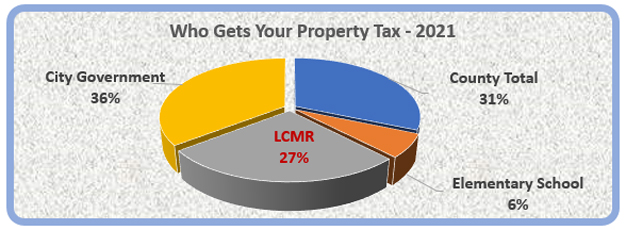
While there will be no tax rate increase
for Cape May City Municipal Services, our
payment to the Lower Cape May Regional
School District (LCMR) will expand from
$7,088,242 in 2020 to $7,962,907 (an
increase of 12.3%) and will account for 27%
of our property tax bill.
What do we get for $7.9 million? LCMR
enrollment for 2020 was 1,258. Of those
numbers, 60 students are residents of Cape
May, or 4.8% of
the enrollment.
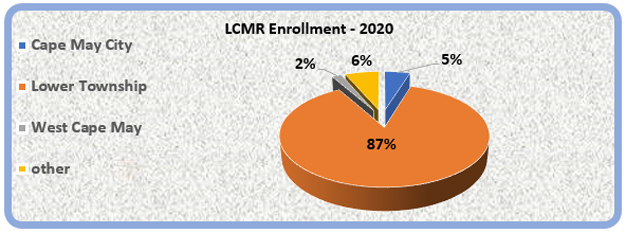
There has been a steady decline in the
number of Cape May residents attending LCMR
since 1977 when Cape May City accounted for
20% of the total enrollment.
Since then, Cape May's share of the total
enrollment at LCMR has fallen by 81.4% while
the total LCMR enrollment is down by about
24%
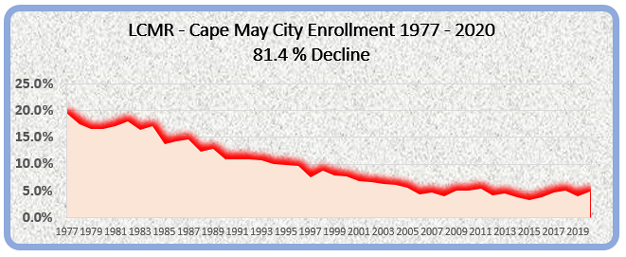
The Cape May City taxpayers' contribution
of $7.9 million for our 60 residents amounts
to a per/pupil tax cost of
$131,618. And, as
LCMR budgets continue to rise while
enrollment continues to shrink, this
per/pupil cost will steadily rise.
Conversely, Lower Township pays a per/pupil
tax cost of $12,915 for its 1,094
residents who attend LCMR.
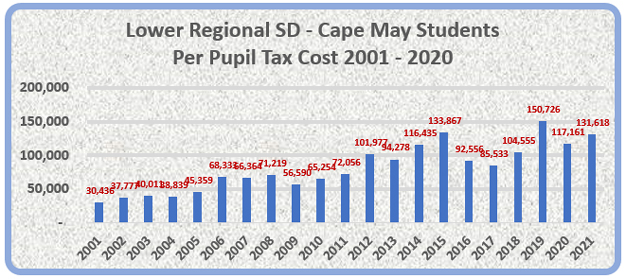

A Brief History:
The communities of Cape May, Lower
Township and West Cape May agreed by
referendum to form a regional school
district in 1956 and further agreed that a
taxation levy to fund the operation of the
district be apportioned based only on
district enrollment.
In 1975, the New Jersey State Legislature
revised school funding laws to require that
all existing regional school tax levies be
based solely on the equalized value of real
estate, thus eviscerating the content and
intent of the referendum creating the LCMR
district. This action proved a windfall for
Lower Township and West Cape May as Cape May
City property values became a cash cow to
annually subsidize the educational cost for
the residents of their partners in the
regional district. That windfall continues
again this year.
Curiously, the legislature did not alter
the membership of the Regional School Board.
Seats on the Board continue to be allocated
by enrollment percentages. So, Cape May
continues to have one seat on the
nine-member board even though Cape May
provides 34% of the tax revenue to support
the district costs.
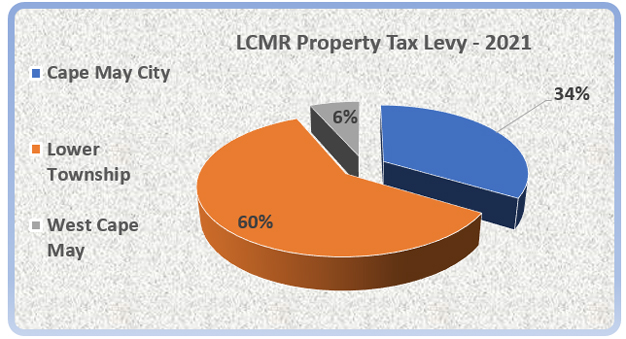
In 1993, the legislature acknowledged the
negative impact of its previous action and
changed the law to permit regional school
districts to return to per-pupil funding or
a combination of per-pupil and equalized
property value funding only if voters in
each community served by the regional school
district approved the change.
Repeated attempts to apply that law to
the inequities of the LCMR taxation model
have all failed.
Several court decisions involving
districts with similar circumstances have
focused on the inequities of the statutorily
prescribed fund options and have directed
several Commissioners of Education to review
all such district funding models. No
Commissioner has done this to date.
In December 2003, the LCMR school board
voted 6-2 against a resolution from Cape May
asking to change the funding formula to one
based on 60 percent from property value and
40 percent based on the number of students
sent to the district.
In 2004 the LCMR school board also voted
against placing a referendum on the 2004
school board election ballot to change the
regional school funding formula.
In 2005, the City of Cape May mounted an
aggressive effort to modify or eliminate the
"grossly disproportionate tax burden"
inherent in the LCMR funding model,
retaining educator/consultants and attorneys
to address the issue.
From 2012 to 2015 Cape May City Council,
and former Deputy Mayor Jack Wichterman led
a careful and costly legal effort to fix
this problem.
In 2014 the State Department of Education
denied Cape May's petition to withdraw from
the LCMR.
Also, in 2014 the member districts of the
LCMR defeated a referendum to modify the
taxation model, largely due to the voters of
Lower Township opposing any change in their
access to the cash cow of Cape May property
values.
Over time our District State and Federal
legislators have been urged to address and
resolve this issue. They have been
unwilling or unable to do so, apparently
favoring voter turnout over tax equity.
From 2000 to the present, the CMTPA has
taken an active role in keeping this issue
at the forefront of public concern.

What Hasn't Been Tried?
It has become clear over time that there
is little interest among our partner
communities in the LCMR in resolving the
inequity of the current taxation
apportionment. Periodic property value
reassessments do adjust values and the tax
levy for short periods of time, but the
escalation of cost and the declining
enrollment from Cape May will force the
inequity to become more severe.
Neither Is help likely from County or
State education officials who have shown
little interest beyond preserving the status
quo. Litigation to date has been
fruitless.
What is clear is that legislation
to correct this flawed statute is perhaps
the only viable option left for Cape May.
Cape May is a unique place in that the
significant majority of property taxpayers
live somewhere other than Cape May, in
places across 33 states and 2 foreign
countries.
However, of the 3,980 taxable
properties in Cape May, most owners (53%)
live somewhere in New Jersey.
There are 40 Legislative Districts in NJ
each with 1 senator and 2 assembly members.
Across the State, Cape May taxpayers are
part of the constituencies of these 120
elected officials. Perhaps it is time
these elected officials become informed
about the inequity affecting their
constituents under current statutes. We pay
taxes in Cape May, but we live all over New
Jersey.
At a time when the Governor and the
Legislature are ramping up interest in new
legislation to regionalize schools and
municipal services, perhaps they need to be
educated on how one of these current
regional schemes works against the interests
of some of its members. And how to avoid
these inequities going forward.
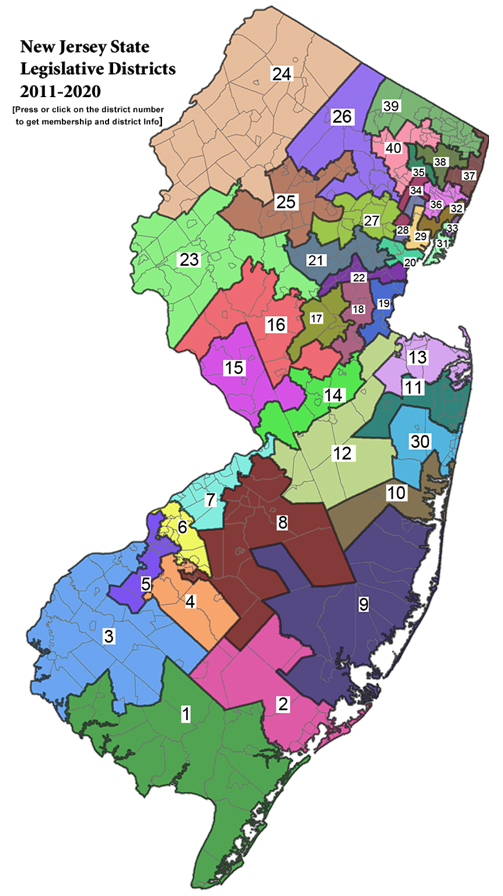
CMTPA urges all Cape May property
taxpayers to reach out to their elected
legislative representatives wherever they
live across New Jersey. Help them understand
the impact this flawed regional taxation
formula is having on one their constituents
and seek their support for legislation to
correct it.
You will find you
legislators' contact information here:
http://www.njleg.state.nj.us/members/roster.asp
Not much has worked to resolve this issue
so far. We think this I worth a try.
Let us know if there is anything we can do
to help you. We have your back.
|

